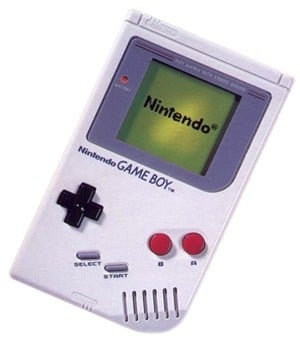
Every now and then a product comes along that is so groundbreaking that it becomes synonymous with its function. The Hoover, Cellotape, Pritt-Stik…these names and many more like them have become so intrinsically linked with their purpose that people often fail to realise that they’re a brand, rather than a description of the object. Another example is the Nintendo Game Boy; for more than a decade this moniker became so tied to the pastime of portable gaming that it was only usurped when Nintendo released an even more successful console in the shape of the Nintendo DS.
The History
The origins of this seminal console can be traced back to one of Nintendo’s early portable successes – the Game & Watch range. Created by assembly line engineer turned design guru Gunpei Yokoi and his highly talented team at Nintendo Research and Development 1, the line of LCD handheld games showcased basic technology but utilised it in innovative ways, ensuring mass appeal and gaining its manufacturer mountains of cash in the process.
Yokoi concocted the idea of ‘Lateral Thinking of Withered Technology’; a design philosophy which focused on using inexpensive and familiar components in new and interesting ways. This model would carry through to Yokoi’s next project, which would make the success enjoyed by the Game & Watch series look almost inconsequential by comparison.
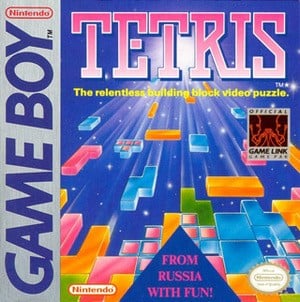
By the time the ‘80s were drawing to a close Nintendo’s standing in the video game industry was impressive; the NES had single-handedly saved the world console market from extinction following the cataclysmic crash of ’83 and the aforementioned Game & Watch range was still shifting a highly respectable number of units. However, Yokoi knew that the technology behind these LCD games was starting to look outdated when placed alongside the experiences offered by the NES and other 8-bit home computers, so he began his quest to create a successor.
As was the case with the Game & Watch, this new machine wouldn’t use revolutionary features to get itself noticed. Yokoi’s design beliefs were too strong; he knew that if he tried to create a console that was at the cutting edge of technology, it would be expensive and therefore lack mass market appeal. Instead he looked at building a device that was economical to manufacture and perfectly suited for its purpose – mobility.
This new console was shown in prototype form in 1987 and would later be demoed at various trade shows. The effect it had on the development community was electrifying. “It was really pretty amazing and exactly what we needed,” says Rare’s Paul Machacek, who coded the fantastic Game Boy title Donkey Kong Land and still works within the firm as a Program Manager. “We had expectations about a handheld gaming system when Rare founder Tim Stamper went to Consumer Electronics Show in the US, but he returned with news about a completely different handheld gaming system. This was in the days before the Internet and you couldn’t just pick up the latest photos and news from the show floor on websites like today. I can’t remember whether we had to wait for a monthly magazine or got something shipped from Japan, but the first time I saw a Game Boy I just thought it looked like a little arcade cabinet in your pocket.”
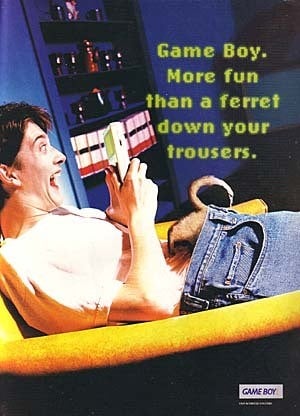
This new machine inherited one vitally important design aspect from its ancestor the Game & Watch – an 8-way digital pad, or ‘D-Pad’ as it’s more commonly known as. We take this interface for granted now but it was Yokoi and his team at R&D1 that developed the concept: sensing that joysticks would impinge on a handheld’s mobility, Yokoi concocted the D-pad – a flat controller that wouldn’t protrude from the casing of any handheld it was applied to. The concept also found its way onto the NES, where it was equally successful. The NES in turn influenced other aspects of the Game Boy interface – the familiar A and B buttons were present, along with the ‘Select’ and ‘Start’. This shared control method was beneficial in two ways: it allowed NES owners (and there were plenty of them) to effortlessly pick up and play this shiny new portable, and it also made it easy to port popular NES franchises to the machine.
As the Japanese release date approached, Nintendo confessed that it had high hopes for the device; President Hiroshi Yamauchi confidently predicted that it would sell over 25 million in the first three years – quite a bold claim for the time. There might have been quite a few people that scoffed at such optimism, but when the machine effortlessly sold 300,000 units in its first day on sale in Japan in 1989, such scepticism seemed foolishly misplaced. It was obvious that Nintendo – and Yokoi – had struck gold once again.
Software played a massive role in this victory and no game is more significant in shaping the Game Boy’s history than the ultra-addictive puzzle title Tetris, created by Russian programmer Alexei Pajitnov. Although this legendary title was already widely available on PC at the time, its appearance on the Game Boy is arguably the reason it is remembered so fondly today. Nintendo of America's CEO Minoru Arakawa witnessed a demonstration of the puzzler at a trade show in 1988 and moved quickly to ensure that Tetris would become the Game Boy’s first ‘killer app’. It was included as a pack-in title in every region except Japan and would become instrumental in cementing the console’s reputation as a ‘must-have’ gadget in the US, where the initial shipment of one million consoles sold out within a matter of weeks.
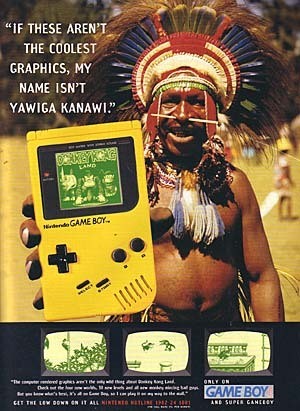
As was the case with the Game & Watch the Game Boy used LCD technology, but instead of static images it boasted a ‘dot-matrix’ screen and could therefore display 160 by 144 individual pixels. It was monochrome, lacked lighting and could only display four different shades of grey, but it is unquestionably one of the reasons why the console was such an enormous success.
It meant that the machine was incredibly energy efficient by the standards of the time, and although it’s rumoured that several of Nintendo’s executives put pressure on Yokoi to adopt a more visually impressive colour screen, his approach was ultimately vindicated when rival manufacturers released their full-colour, backlit portable machines onto the market shortly after Nintendo’s handheld launched. Their battery life was dismal and this factor undoubtedly helped the Game Boy win the war. ”Kids hate replacing batteries; it requires having to ask your parents for something,” chuckles Dylan Cuthbert, former Argonaut employee and Managing Director of Q-Games. “The longer a machine can run, the more people enjoy themselves and want to play more games on it.”
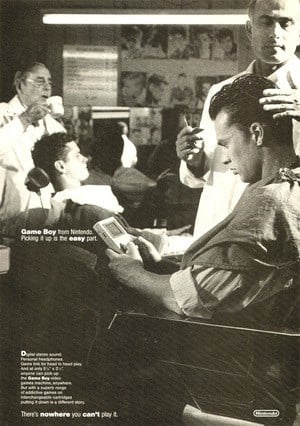
However, while it was easy on power consumption the screen wasn’t universally adored by everyone and even at the time there were rumblings of discontent over its blurriness. Fast-moving objects were incredibly hard to see, which made some games difficult to play. “You didn’t want lots of the screen to have a lot of detail that was moving continuously,” explains Rare’s Chris Sutherland. “It meant keeping the backgrounds plainer or ensuring there were pauses in the scrolling. Objects like bullets had to be made larger, or with significant outlines so that players could more easily spot them.”
This problem was amplified by the fact that the screen functioned best when viewed in direct light; to tackle this problem a wide variety of bolt-on peripherals were developers that not only added light sources but also magnified the display. The usefulness of such devices was questionable at best; when installed they rendered the Game Boy distinctly un-portable.
More software followed, with early hits such as Super Mario Land, Castlevania II: Belmont’s Revenge and Operation C helped to keep interest in the console high. Just had been the case with the 8-bit NES, the Game Boy enjoyed a superlative degree of third-party support with all of the big names in the industry backing the console with their software: Konami, Square, Capcom, Irem and Hudson – as well as plenty of other publishers and developers – all pledged to support Nintendo. This resulted in an avalanche of software and made it very hard for rivals like Atari and Sega to gain a foothold, despite their more technically powerful Lynx and Game Gear hardware.
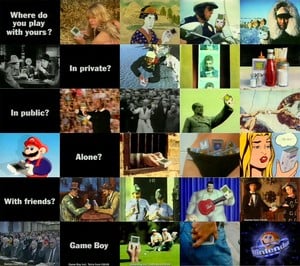
As the years rolled by the popularity of the Game Boy remained buoyant, while rival handhelds fell by the wayside. This success was no doubt assisted by quality games such as The Legend of Zelda: Link’s Awakening, Super Mario Land II, Donkey Kong Land and Metroid II: Return of Samus. However, it was the Japanese release of the first Pokémon title in 1996 that catapulted the Game Boy into hitherto uncharted realms of commercial triumph.
Sadly this second wind was something of a double-edged sword for the monochrome marvel. It resulted in Nintendo looking into successors for the ageing hardware (although without Yokoi’s help – he had left the firm in disgrace after the failure of the Virtual Boy and would later meet a tragic end in a road traffic accident), and the first baby steps were made with the Game Boy Pocket in the same year that Pokémon made its Japanese debut.
Essentially a scaled-down version of the machine that boasted a sharper screen and ran on two AAA batteries, the Game Boy Pocket revitalised hardware sales and was a much-needed aesthetic update that kept the console relevant in the increasingly fashion-conscious PlayStation era. However, another upgrade wasn’t far off and this time Nintendo would enhance the concept far more convincingly – the Game Boy Color delivered the bright and attractive visuals that fans had been clamouring for since the early ‘90s and although the machine was based heavily on the existing Game Boy tech (it was even backwards compatible with existing black & white software) it essentially marked the end for the original ‘breeze-block’ version of the machine. As the Color variant gained popularity, over 50 million of its monochrome siblings were relegated to the back of drawers and cupboards the world over.
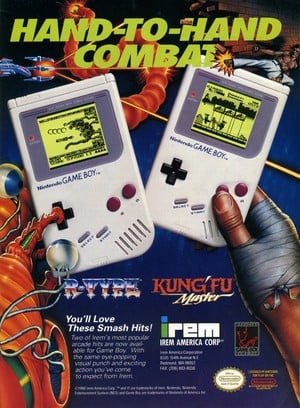
A Developer’s Viewpoint
Given the massive popularity of the Game Boy, finding programmers with experience of creating software for the machine is like shooting ducks in a barrel. “I first encountered the Game Boy the first day I started working at Rare back in mid-1989, and it hadn’t even been released then, so it was definitely a surprise,” recalls Sutherland. “Although the original looks a bit bulky nowadays, back then it seemed impressively compact.”
However, in those early days, coding for the Game Boy wasn’t exactly a walk in the park. “Part of the challenge in developing for Game Boy was that there was limited documentation; it was usually some very basic hardware information that was translated from the Japanese,” continues Sutherland. Thankfully the CPU that powered the portable was at least known to programmers. “At the Game Boy’s heart was a castrated Z80, a CPU I was very familiar with from the Spectrum and Amstrad CPC,” explains Jon Ritman, the legendary coder behind Head Over Heels and the superlative Monster Max on the Game Boy. “They had taken out a few useful features such as the 16-bit instructions and they had also removed most of the registers. The memory was paged in and out to give you access to a lot of memory – far more than a Spectrum could address – but the paging could be hard to manage. However, it was great that it had far more memory than I was used to.”
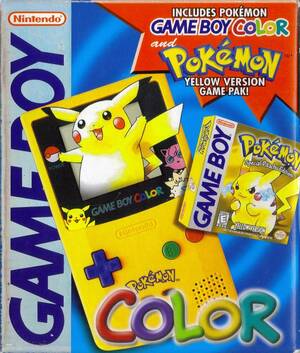
Explaining the inner workings of any games machine in lay terms is tricky, but Rare’s Machacek is happy to run through the basics. “It boasted very simple screen architecture with a single character mapped screen that you could scroll,” he says. “A small bank of characters for background, a similar size bank for sprites and a third similar size bank shared between background and sprites. We were always fighting with that one because it was a juggling act between optimising the background enough to free up space to include the sprites you needed. Just to get this juggling in perspective, if each unique character available in both of those banks for the backgrounds were only displayed once on screen, you’d only fill a quarter of the visible screen space. Just like the NES, you really had to use a lot of repeated characters to fill the background. If you were doing a big long scrolling level with lots of unique scenery then massive amounts of downloading to the banks had to take place.”
Many programmers found that working on the Game Boy was preferable to coding for other popular platforms, including its domestic brother, the NES. “I learned to program on a 6502 processor system, rapidly switching to Z80 ones before joining Rare in 1988,” remembers Machacek. “Working initially on the NES brought me back to 6502 but the Game Boy allowed me to return to Z80 which I preferred. In some ways the Game Boy seemed a step up from other systems I had used; the Amstrad CPC 464 had no sprites and the ZX Spectrum, which I love to bits, had attribute problems. Aside from the lack of colour, it was a very similar format to the NES that we were already working with.”
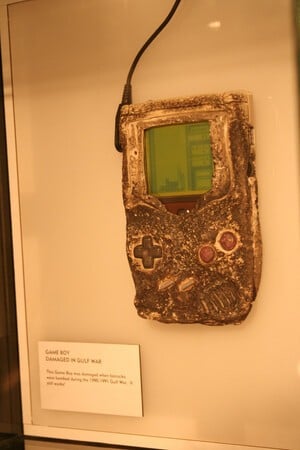
In fact, the machine’s 4-shade greyscale screen was seen as a bonus by some programmers. “I had been making games for the Spectrum that were using the screen as just two colours, so monochrome didn't phase me at all,” comments Ritman. “Four shades was heaven for me – it was two more than I had been using on the Spectrum!” Over time various tricks were developed in order to work around the shortcomings of the display. “We were very clear that sprites needed to stand out clearly from backgrounds, and the backgrounds would blur a bit when you scrolled quickly due to the lag on the display,” says Machacek. ”Efforts were made to give important sprites, like the player character, strong outlines to help delineate them from the rest though.”
On the audio side of things the Game Boy offered an additional challenge for coders. “The sound chip was interesting,” comments Cuthbert. “It had a ‘user wave table’ of something daft like 20 entries, each of which was 4-bit, so if you could refresh it quickly enough it could play sampled sounds, albeit very low-res samples. It also had a more regular FM-style chip and a noise generator.”
Getting the most out of this humble setup was no easy task. “The engineers at Rare dabbled with the basic sound effects that our own wave-based audio system could supply,” recalls Machacek. “Most of the engineers at Rare didn’t understand it that well; I think Mark Betteridge (now studio head of the company) was the only one of us that really knew how to get the sound he wanted. Later on we did incorporate some sound sampling into some titles and were able to play back low quality sampled audio for specific purposes.”
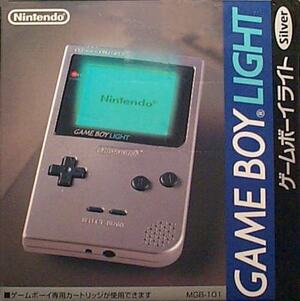
When coding for the Game Boy, many developers found that its similarity with the NES was immensely beneficial. “It was obviously a little less powerful, but many tricks we used on the NES translated well,” recalls Machacek. “Having pseudo-scrolling screens by using a repeating character pattern in places and downloading a repeating ‘texture’ to them that appeared to scroll was often seen. We always crammed in lots of carefully timed parallax scrolling effects as well. Access to the video RAM was limited, and the space for characters and sprites was small, so you constantly had to download artwork to the video RAM but could only do a little bit per frame. Trying to super-optimise your download code so that it wasted no time and shifted as much data as possible really paid off. I think, between judicious use of H-Blank as well as V-Blank downloading I managed to shift about 24 characters per frame which allowed us to do the sort of animations that appeared in Donkey Kong Land in 1995.”
Based on the groundbreaking CGI-rendered SNES hit Donkey Kong Country, this highly enjoyable platformer is arguably the title that pushed the original Game Boy to its absolute limits, and Machacek is proud of what he achieved. “I deliberately sat down and spent three weeks doing nothing but engine work to get it to a point that it could handle anything we threw at it,” he remembers. “At that time many games were downloading about 6-8 characters a frame to the video bank and Donkey Kong Land needed much more than that with all of the rendered artwork it had to drive. I do know that my lead artist got fed up of waiting for me to finish this work! It was techy stuff that was invisible to him, and you have to understand that three weeks to write an engine seemed like an age when we had put out the Game Boy version of WWF SuperStars in three months flat – including testing – a couple of years earlier. But the Donkey Kong Land engine was able to shift 24 characters a frame by the end, and suddenly we were able to drive a lot of rendered artwork. I don’t think anyone complained after that, especially when it sold four million units!”
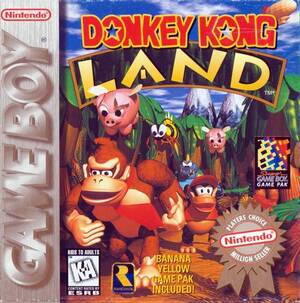
Having played an integral part in the success of this near-legendary console by coding some of its most memorable titles, it seems almost churlish to ask them what made the Game Boy so popular, but we’ll do it anyway. “In the 1980’s there were plenty of dedicated handheld, battery powered gaming machines,” says Machacek. “You’d buy a Space Invaders handheld, or a Pac-Man one, or whatever. Here we had a single device that you could buy lots of games for and carry them all around simply. It was far superior to those other machines in every way and even came with multiplayer capability if you had a cable. Traditional gamers were now on the move. But at the same time, that perfect marriage of Tetris and the Game Boy found a new audience that weren’t necessarily into games, and didn’t even realise probably that you could buy more games, but simply bought the ‘toy that plays that funny little blocks game’ that their friends had. Unlike home computers and consoles, the Game Boy could be taken to school or offices and combined with the low price, this was enough for non-gamers to get sucked in too.”
The legacy of the Game Boy is considerable and some insist that Yokoi’s design ideals continue to influence Nintendo’s thinking even today. “Arguably Yokoi’s philosophy has continued with the Wii,” states Sutherland. “The lower spec and price point meant it has a larger initial potential audience, although remember the games are always what actually drive the sales – that’s why people buy it, not because of the hardware. Tetris was to Game Boy what Wii Sports is to Wii.”
This feature originally appeared in its entirety in Imagine Publishing’s Retro Gamer magazine, and is reproduced here with kind permission.
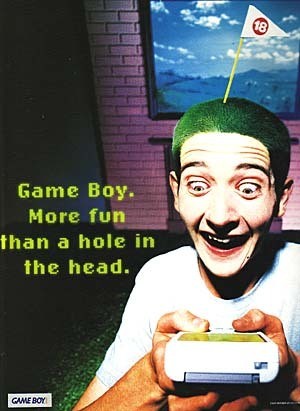





Comments 48
"More fun than a hole in the head"
Did you guys get those adverts in the UK as well? I remember they featured in magazines and television over in Oz.
Also the old song they used in the initial advertising for it when it was released
Game Boy! Super Mario Land
Game Boy! F1 Raaace
Game Boy! Don't forget your Tetris
And Dr. Mario in your faaaace!
god bless that gray brick -- there's no way a DSi would've survived that kind of gulf-war abuse. :3
My year 8 religion teacher, who used to work for Nintendo, was one of the first people to play Tetris.
My first Nintendo console.
You will be my favourite little big brick forever my friend.
The old times, playing Mario Land, Donkey Kong Land, some 3º party awesomeness...
or a bit more recent, the famous Blue & Red RPG that we played all together for the ultimate 151 price, that doesn't need introductions.
Your time is long gone, my loved brick, but your legacy still lives on, bringing smiles to the children and beyond.
@Aviator: If I worked with Nintendo and was one of the first to play Tetris, I sure as hell wouldn't get a job teaching religion to year 8s. No offense to them, of course.
I do love the Gameboy. I still consider the graphics better than some today, however weird that may sound.
One of the most important things the Gameboy line maintained over its competition was battery life, something I believe the DSi still does over the PSP.
Stunning post. Well done. =)
I regret today that I sold my Gameboy. Mayby my friend who bought it still has it? Wonder if I might buy it back from him?
I have a GBA SP, the only kind of GBA I own. But I can play ANY KIND of Game Boy game with it. I mainly play the Nintendo DSi now, a worthy sucessor to the Game Boy I just hope one day that Nintendo starts a Virtual Handheld on the DSi, those Game Boy cartridges cannot last forever!
I loved that system. Especially because of Tetris.
Let's hope there is an Virtual Console next generation. There are a lot of games from the Game Boy library that I want.
Gameboy was cool.
But I think a ferret down the pants is better
The Gameboy was the first system I owned, and it blew my mind. If someone told me that I would have the power of a Nintendo 64 in my hands, I would have called them crazy, since obviously nothing was better than the gameboy
That ferret ad creeped the hell out of me. He seems far too excited for anything but very, very disturbing things to be occurring.
I still remember the day I got my Game Boy, it's hard to describe the feeling when I was unboxing and playing this baby for the first time. It was something surreal.
It sucks that i missed all this. I was too young. My first system was N64 and I played Gameboy Advance
The Game Boy was one of the best handhelds that I have ever played (and owned). Now I own a Nintendo DSi, another great handheld. I just hope that they release a Virtual Handheld for the DSi. Then I'll REALLY be happy
Ah, the memories from my childhood...
@Junior117
virtual console that only has portables? hmmm.. not a bad idea
Neat-o article.
I still remember how blown away I was the day I got this when it launched. I got the system and Super Mario Land and I don't think I put it down for weeks. Great article Damo and a fitting tribute for one of the great game systems of our time.
Manly tears, my friends. Manly tears. I never owned a Gameboy Brick (as I now affectionately call it) but I've played on other people's gameboys for days. And I'm a proud owner of a purple gameboy color.
Gameboy, you were my first Nintendo system... NEVAH FORGET! ;_;
I wonder if that ferret belonged to Pix
This brings back so many good times. I'm really wishing I didn't trade in all my old GB games...
I was a huge GB kid growing up, and still love its best games to this day. A great system to collect for as well, a lot of the great games are cheap and there's certainly a lot of them
You really see the genius of the late Mr. Gunpei ith his theory of Lateral Thinking of Withered Technology. You also see why the Virtual Boy he developed was such a flop;it was too soon, way too far ahead of it's time.
It's still a shame that Nintendo either made him resign or quit because of the VB fiasco, especially after all the money he made for the company not just with the Gameboy itself but with all the software that came from that system, Metroid, Kid Icarus, etc. It shows how Japans Honor system is completely outdated and his dismissal from the company should always be a black eye for the company and not forgotten when discussing nintendo's history.
Gunpei and Miyamoto made Nintendo in my opinion. When the layman thinks Video Games (well, up until very recently) they think Mario and the Game Boy.
I still have my original Game Boy and it works great. I will never sell it.
One other thing about the lasting influence of the Game Boy, I haven't been in a match in close to six years but I still get to go backstage at a lot of events and even ride with people during some road trips. Yet, you still can't go backstage at a wrestling show and see at least one of the boys playing one of the iterations of the Game Boy. The older guys say "We used to talk about how to get more heat in a building (meaning get more of a reaction from the crowd) during a car trip, now all you guys talk about is what bleepin' game your playing".
I really miss the original Game Boy. That was the first piece of gaming hardware that I purchased with my own money during my senior year in high school. Tetris, Donkey Kong Land and Donkey Kong 1994 were my first games; I would beat them time and time again.
(Plays Chicago's "Old Days" in Game Boy's memory).
I actually hated the original Game Boy. Not from a software standpoint, but the tiny, low res screen gave me blinding headaches after playing it for more than 10 minutes.
I unfortunately could never get my hands on another Game Boy since I broke my old one about 7 years ago. Poor me.
I have an original 1989 Game Boy, but mine has clear plastic instead of the traditional tan color.
Oh, and that one kid with the hole on his head looks creepy.
Nice Article.
Bravo. Bravissimo.
I still got one of those monochrome gray bricks in my closet somewhere
@Miketh2005 he said that the dpad fro the game and watch series influenced the dpad on the NES and the Game Boy, but the way it was written if you didn't read the previous paragraph it could be confusing lol
I found an old brick-sized GB cleaning out a storage tent in my backyard. Most of the stuff had been damaged by rain/wind in a storm... And most of the clothes were molding (yuck)... And even though the GB was soaked, I took it inside, let it dry off, and gave it a fresh set of batteries... It worked!
LOL, gameboy games in bikini! that is sooo sexy! i'd buy one just cause of that ad.
I constantly browse ebay and local shops looking for GB games. I have more rare GB games than any other collection of games I own. Mega Man V and the Turtles games are awesome. I actually liked how short some of the action games were. You were traveling so you didn't have time to play all day and I'd always get sick playing in the car.
Holy bleep... I played the original game boy sooooo frickin' much! Now I think about it, it was insane. I went everywhere with that thing. Literally! I'd be playing that first thing in the morning & last thing at night, I'd be playing it in the pool, @ the beach, in the bath, I didn't care where I was.
I just had to play those games.
I remember playing Tetris, Donkey Kong Land, Pokemon Blue & Wario Land (aka Super Mario Land 3) with faint memories of other games. I went through about a pack of 4 AA's a week (would've been more if mum hadn't gone mad at me for having to buy them all the time, back in the day they were expensive!). I think I can remember getting at least 7 fat game boys (not at once ) due to losing one, the next falling in the pool, next one falling in the bath etc. It was nuts how much I loved that machine. I will forever remember the awesome music of Tetris, & the awesome experiences that portable game boy gave me.
Thank you Nintendo!
The Game Boy stole my life
The brick sits on display on my shelf right next to my Ipod case
I never had one as I couldn't afford one, but I am thankful for it as it has paved way to one of my favorite handheld thus far the DSi.
Great article, but the spelling errors are absolutely embarrassing.
This was the only Nintendo product I owned before a friend gave me his old NES years later. Good times and much better arcade ports than you could find on the NES, suprisingly enough (Snow Bros. is a revelation).
I think I must have e-Bayed it around the time I got a 3rd party GameBoy player to plug into my original Playstation...good times.
(sniffle) This brings back so many memories. My first system was a game boy color. I never had the first one until about a month ago when I found one in perfect condition. I <3 Game Boy!
I'm so glad I have the gray brick. I picked it up about 3 months ago from a thrift store for only five smackers. Looked like crap when I got it (was missing lens to the screen). After some deep cleaning and a new screen, my Gameboy looks gorgeous! Great read, btw
Great review!!!!
The battery life was pretty sweet, and my parents picked me up one of those rechargeable battery packs for my original gameboy. It got so hot when it charged I always thought it might be a little dangerous
Mario Land was my first game, then Zelda and Pokemon Blue. Vague memories of other games, but those are the stand outs
I AM FROM THE FUTURE
Show Comments
Leave A Comment
Hold on there, you need to login to post a comment...